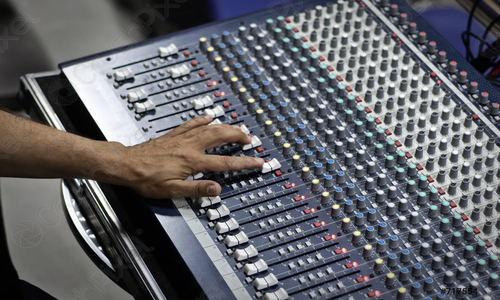
Those who work with vocal recordings and use song structures in their music often find themselves in a situation where the lead vocals (main voice) do not really stand out from the background vocals (choir voices). This applies especially to the chorus or hook, in which many voices often overlap.
Mixing lead vocals only becomes really difficult if you want to include backing vocals in your mix as well. Layering and unification produce a subtle and impure sound. In this article, you'll learn how you can tell both types of vocals apart in a mix. So, what can be done to distinguish voices by sound?
Backing vocals duplicate the main vocals and are used for amplification. We need to push backing vocals into the background so they don't draw so much attention to themselves.
One way is to remove the high frequencies from the backing vocals. You can also remove attention-grabbing frequencies from the chorus. They are mostly found in the human voice between 400–800 Hz and 2–4 kHz. This option works especially well if you boost the same frequencies a bit on the lead vocal. If there are certain frequencies characteristic of the lead vocal, then in the back vocal it is advisable to muffle them a little. A slightly more artificial but very distinct sound can be achieved by cutting frequencies down to around 1kHz with a high pass filter.
Another way to distinguish lead vocals from choirs is to make the backing vocals much less dynamic, i.e. compress much more. However, do not overdo it when using the compressor, otherwise everything will sound very unrealistic. Depending on the recording, we can use a compressor with a ratio of 8:1 to 20:1. The attack must be set very fast to get the compressor to work as quickly as possible. If you have a compressor with a side chain output, you can try to dampen the volume of the backing vocals with the lead vocals.
And the last tool for separating backing vocals from the lead is such an option as panning. In a live performance, the choir usually stands a few meters behind the singer and mostly moves to the side. And this is exactly the position of the performers that we should try to reflect in the mix. To place the choir acoustically behind the singer, we use positioning in the stereo image with the pan pots and adjusting the appropriate first reflections in the reverb effect path.
Of course, this also works with vocals. We place the lead vocals in the center of the stereo panorama of our mix, and we expand the backing vocals (chorus) more to the sides. In the reverb effect, we use the following law of physics: voice reflections take longer to reach the listener than direct sound, and the difference between direct sound and its early reflections is smaller for the choir than for the singer.
So you've learned three ways to separate lead vocals from backing vocals. When working on a mix, you can often see that one of the options on its own does not give the desired effect. It's not uncommon for you to use all three of the tools mentioned above to get the sound you know from commercial songs and the way you imagine it to be. The EQ, compressor and reverb effects used are also essential tools for every music producer and should be available to anyone involved in music production.
